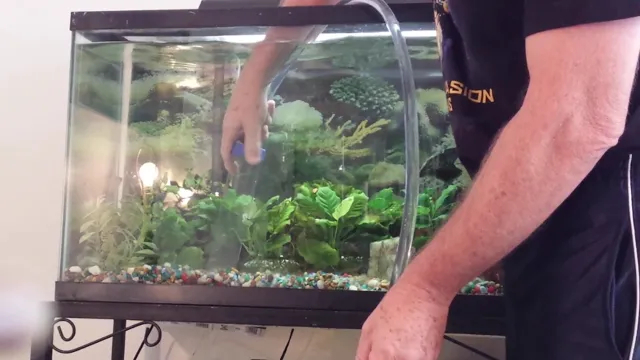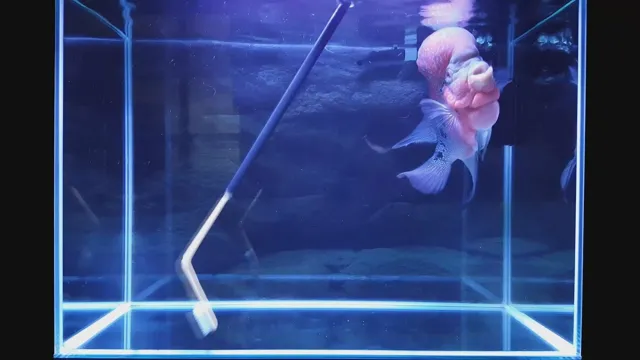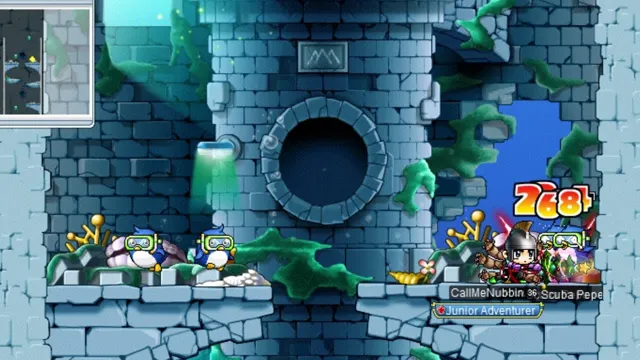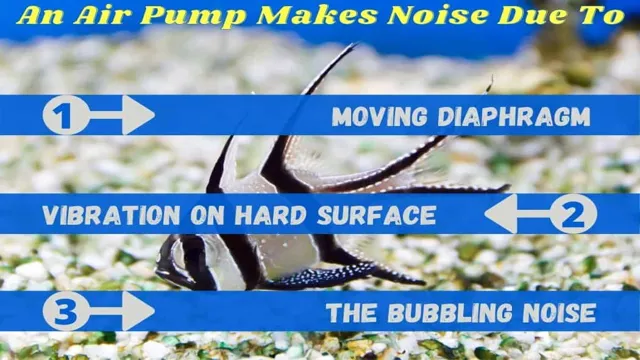How to Create Substrate Levels in Aquarium: A Step-by-Step Guide for Aquarists
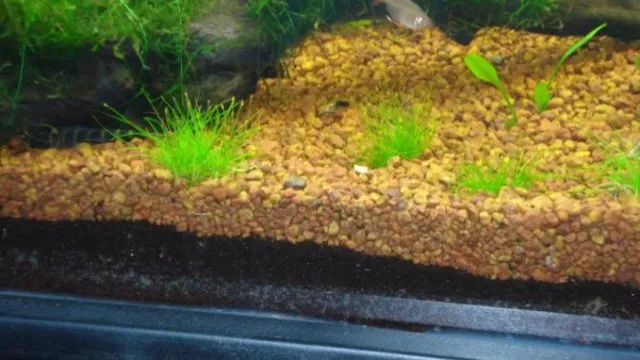
Do you want to create a thriving and healthy aquarium ecosystem? Then, you must start by paying attention to the substrate levels in your tank. Substrate refers to the material at the bottom of your aquarium, and it plays a crucial role in creating a natural environment for your aquatic pets. When you have a balanced substrate level, it helps in providing a base for your plants to establish their roots, aids in biological filtration, and helps in the breakdown of waste materials in your tank.
As such, it’s essential to understand how to create the right depth and consistency for your aquarium substrate. There are various ways to achieve the perfect substrate levels for your tank, depending on the type of aquarium you have and the aquatic plants and creatures you keep. Some popular options include using sand, gravel, soil, or a combination of these materials.
It’s important to note that while creating substrate levels in your aquarium is crucial, it’s always best to research the recommended substrate depth and type for the species of plants and fish you have. This ensures that your aquarium thrives and your aquatic pets stay healthy. In summary, creating substrate levels in your aquarium is a crucial aspect of maintaining a balanced and healthy aquatic ecosystem.
By taking the time to research and implement the appropriate substrate depth and consistency, you can ensure that your aquarium thrives and that your aquatic pets live long and healthy lives. So, start paying more attention to your substrate level today and create the perfect environment for your aquatic pets.
What are Substrate Levels?
Substrate levels in an aquarium refer to the layers of material that form the bottom of the tank. Creating substrate levels is essential because it provides a place for beneficial bacteria to grow, which are necessary for keeping the water clean. Additionally, substrate levels improve the appearance of the tank and provide a natural environment for fish and plants.
To create substrate levels, add a layer of gravel or sand to the bottom of the tank. This layer should be at least 2-3 inches deep and can be arranged in different ways to create different levels, slopes, and terraces. When adding the substrate, it’s important to rinse it well to remove any dust or debris that may cloud the water.
Once the substrate is in place, you can add decorations, plants, and other features to enhance the tank’s natural look. Overall, creating substrate levels is an important step in setting up a healthy and beautiful aquarium.
Definition
Substrate levels refer to the concentration of the various reactants that are involved in a chemical reaction. The term “substrate” refers to the molecule or compound that is being acted upon, while the term “level” refers to the amount or concentration of that molecule or compound. In biochemistry, substrate levels play a crucial role in metabolic pathways, which are the chemical reactions that occur within cells to break down or produce molecules.
For example, in glycolysis, which is the process by which glucose is broken down into energy, the levels of glucose and other substrates in the cell determine the rate at which the reaction proceeds. Similarly, in the production of amino acids, the levels of precursor molecules such as glucose, pyruvate, and other amino acids can influence the rate and efficiency of the reaction. In summary, substrate levels are an important factor to consider in many biochemical reactions and can have a significant impact on their outcomes.
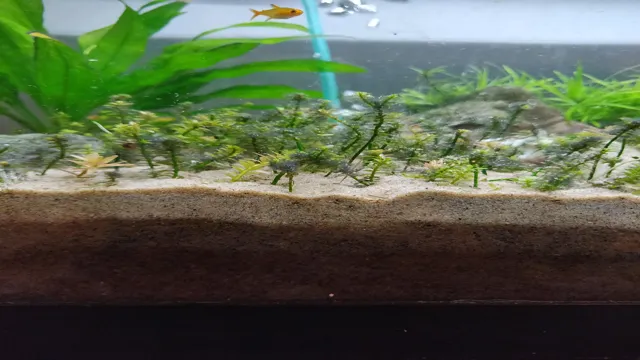
Importance of Substrate Levels
Substrate Levels Substrate levels are the amount of substrate molecules available in an organism’s metabolic pathways for conversion into energy or other products. The level of substrate can influence the rate of enzyme activity and ultimately impact the overall metabolic output of an organism. For example, if substrate levels are low, an enzyme may not be able to catalyze the reaction efficiently, leading to a slower metabolic rate.
On the other hand, if substrate levels are abundant, an enzyme may have too much substrate to work with, leading to competition between different reactions. Substrate levels are essential for the proper functioning of metabolic pathways and can be influenced by a variety of factors, including diet, exercise, and disease. Maintaining optimal substrate levels can help ensure the efficient functioning of metabolic pathways and overall organismal health.
Tools Needed to Create Substrate Levels
If you’re looking to create a substrate level in your aquarium, there are a few tools you’ll need to get started. First, select a suitable substrate, such as sand, gravel, or a specialized aquarium substrate. Next, you’ll need a good quality filter to maintain water clarity and keep the substrate clean.
A heater is also crucial to ensure a consistent water temperature for your aquatic inhabitants. Finally, you’ll need a siphon or vacuum to clean and replace water on a regular schedule. Depending on the size of your aquarium, these tools may vary in size and specificity, but they are all essential for creating a healthy substrate environment for your aquatic plants and animals.
Remember to research and read instructions carefully, and to regularly test water parameters to ensure your aquarium is thriving. With the right tools, creating substrate levels in your aquarium can be an enjoyable and rewarding experience for both you and your aquatic pets.
Aquarium Tank
When setting up an aquarium tank, creating substrate levels is essential for the health and well-being of the fish and plants. To do this, you will need a few tools, including a substrate leveler, a grading rake, and a scoop. The substrate leveler is used to distribute the substrate evenly throughout the tank, making sure that there are no high or low spots.
The grading rake is essential for creating the necessary slopes and contours needed for the plants to thrive. And, lastly, a scoop is useful for adding or removing substrate as necessary. When creating substrate levels, it’s important not to rush the process.
Take your time and make sure that everything is level and properly graded. By doing so, you’ll end up with a healthy and vibrant aquarium that your fish and plants will love. So, gather your tools, and start creating a beautiful home for your aquatic friends!
Substrate Materials
When creating substrate levels, you will need a variety of tools to get the job done effectively. These tools range from simple garden trowels to heavy-duty excavators, depending on the size and scale of the project. Garden trowels are great for small-scale projects like creating raised garden beds or planting small shrubs.
For larger projects, you may need to invest in larger equipment like a skid-steer loader or backhoe. These tools are necessary to excavate the land and prepare it for the substrate layers. You’ll also need tools like levels and measuring tapes to ensure that your substrate is being laid evenly and to the correct depth.
Proper preparation and precise installation of substrate layers are crucial to the success of any landscaping project. With the right tools and a little bit of know-how, you’ll be able to create beautiful and functional substrate levels that will last for years to come.
Ruler or Measuring Tape
When it comes to creating substrate levels, one essential tool you’ll need is a ruler or measuring tape. These tools will help you measure the exact height of your substrate, ensuring that all areas are level and consistent. Without them, you’ll risk creating uneven substrate levels that can cause various issues down the line, such as poor drainage or plant root damage.
When using a ruler or measuring tape, it’s essential to be as precise as possible, taking into account any variations in the substrate’s height. This will ensure your substrate is level and stable, providing the perfect environment for your plants to thrive. So, if you’re planning to create substrate levels, make sure you have a quality ruler or measuring tape on hand, and don’t forget to use it correctly!
Flat Tool for Leveling
When it comes to creating a substrate level, having the right tools is crucial. One of the most important tools needed is a flat tool for leveling. This tool helps to ensure that the substrate is level, which is important for creating a stable foundation for whatever is being built.
A flat leveling tool can come in many forms, such as a straight-edge, a level, or a screed. No matter what type of leveling tool you choose, it’s important to make sure that it’s long enough to cover the entire width of the substrate area. This will prevent any areas from being missed during the leveling process.
By using a flat tool for leveling, you can create a stable and even substrate that will ensure the success of your building project.
Bucket or Container for Water
When setting up an aquarium, it’s important to have the right tools to create substrate levels. One of these tools is a bucket or container for water. This will come in handy when adding water to the tank, especially if you need to add water slowly or in small amounts.
A bucket or container will also make it easier to mix in any aquarium salt or other additives that you may need to add. Additionally, having a dedicated container for water will help prevent any accidental contamination from other substances that may be on the surface of a regular household item. By taking the time to gather the necessary tools, including a bucket or container for water, you’ll be well on your way to creating a healthy and thriving aquarium environment for your fish.
Steps to Create Substrate Levels
Creating substrate levels in your aquarium can be an essential step in ensuring a healthy environment for your aquatic pets. The first thing you need to do is choose the right type of substrate. Make sure you choose a substrate that is appropriate for your aquarium’s inhabitants, is easy to maintain, and provides a comfortable surface for your pets to burrow or sift through.
Next, create a slope in the substrate by building a raised area at the back of the aquarium and tapering it down towards the front. This will create a natural-looking, slanted layer of substrate. When adding the substrate, take care not to disturb the slope you have created by adding it slowly with a gentle hand.
You can also add rocks or driftwood to further enhance the aesthetic appeal of your aquarium and provide more hiding places for your pets. Remember to rinse the substrate thoroughly before adding it to the aquarium to remove any dust or debris. With these simple steps, you can create a beautiful and functional substrate in your aquarium that will help keep your fish and other aquatic pets happy and healthy.
Step 1: Drain and Clean the Aquarium
When it comes to setting up a new aquarium or refreshing an existing one, creating substrate levels is a crucial step towards a healthy and happy aquatic environment for your fish. The first step, however, should be to drain and clean the aquarium to ensure the substrate and everything else is free of debris and harmful bacteria. Once you’ve done that, it’s time to start considering substrate levels.
Depending on the needs of your fish and plants, you may opt for a single layer of substrate or multiple layers with varying composition and depth. This will also depend on whether you plan to have a planted or non-planted aquarium. Regardless of your choice, remember that substrate levels provide essential anchorage, nutrient content, and filtration for the aquarium ecosystem.
So, take the time to research the recommended depths and materials for your chosen tank inhabitants and get started on creating a healthy and natural environment that your fish will be happy to call home.
Step 2: Create a Plan
Creating a plan for substrate levels is an essential step in setting up a sustainable indoor garden. The first thing to consider is the type of plants you’ll be growing. Different plants have varying nutrient requirements, so it’s crucial to identify the specific needs of your plants before determining the substrate levels.
Once you have a basic understanding of your plant’s needs, you can then decide on the substrate type, depth, and quantity. Ensure that you choose substrates that are rich in nutrients, pH-balanced, and retain moisture. It’s also essential to know your plants’ growth phase so that you can adjust the substrate levels accordingly.
Make sure to monitor the substrate regularly and make adjustments when necessary. With a well-planned substrate level, you can ensure optimal growth and yield for your indoor garden.
Step 3: Calculate Rough Substrate Depth
When creating substrate levels for your garden, it is important to calculate the rough substrate depth before moving on to the next step. This will give you an idea of how much substrate material you will need to cover your garden area. To calculate the depth, you should measure the width and length of your garden bed and multiply the two numbers to get the total area.
Next, decide how deep you want the substrate to be; a good depth to aim for is around 3-4 inches. Once you have your desired depth, multiply it by the total area of your garden bed to get the rough substrate depth. For example, if your garden bed is 6 feet wide by 10 feet long and you want a depth of 4 inches, you would multiply 6 x 10 x 0.
33 (4 inches divided by 12) to get a rough substrate depth of 18 cubic feet. By calculating the rough substrate depth, you will be better prepared when it comes time to purchase and apply your substrate material.
Step 4: Add Substrate Materials
When it comes to creating substrate levels, one of the most important steps is to add substrate materials. Substrate materials provide a foundation for your plants to grow on, as well as helping to maintain moisture levels and providing essential nutrients. The substrate materials you choose will depend on the type of plants you are growing and the environment they will be growing in.
For example, if you are growing plants that require a lot of moisture, you may want to use a substrate that retains water well, such as coconut coir or peat moss. On the other hand, if you are growing plants that require good drainage, you may want to use a substrate made of a mix of pebbles, sand, and soil. Whatever substrate materials you choose, it is important to ensure that they are properly mixed together and evenly distributed throughout the substrate layer.
This will help to create a stable and supportive environment for your plants to thrive in. So, whether you are creating a substrate layer for an indoor garden or an outdoor landscaping project, taking the time to add the right substrate materials is key to achieving a healthy and bountiful crop.
Step 5: Level and Smooth Substrate
Creating a level and smooth substrate is crucial to ensure that your flooring installation is successful and long-lasting. The first step is to clean the substrate thoroughly and remove any debris or loose particles. Then, inspect the substrate for any cracks or uneven areas, and use a self-leveling compound or patching compound to fix them.
Once the substrate is repaired and level, use a floor scraper or sander to smoothen the surface and remove any rough spots or bumps. It’s important to ensure that the substrate is completely level before proceeding with the flooring installation, as even minor imperfections can cause problems down the line. By taking the time to properly level and smooth your substrate, you can ensure a smooth and durable flooring installation that will last for years to come.
Step 6: Fill the Aquarium with Water
One key aspect of setting up an aquarium is creating substrate levels. These levels will provide a natural environment for your fish and plants to thrive in. To achieve this, you can use a variety of materials such as gravel, sand, or soil.
It is important to create different layers, with the coarser materials on the bottom and finer materials on top. This will help to promote proper water flow and prevent debris from settling in one area. Additionally, you can incorporate rocks, driftwood, or other decorations to add visual interest and provide hiding places for your fish.
Creating substrate levels may take some time and experimentation, but it is a crucial step in creating a healthy and natural habitat for your aquatic pets.
Step 7: Fine-tune the Substrate Level
Creating substrate levels is a crucial step in developing any gaming platform. It allows the game developers to fine-tune the game’s mechanics, adding extra details and challenges for players and improving the overall user experience. When designing a substrate level, there are several key factors to consider.
Game developers need to keep in mind aspects such as difficulty, reward system, player progression, and game flow. A well-designed substrate level should grab the player’s attention and keep them engaged from start to finish. It should also be challenging but not frustrating, and players should feel rewarded for their efforts.
By fine-tuning the substrate level, game developers can add their own unique touch to the game, making it stand out from the competition while keeping the gameplay fresh and exciting.
Tips and Warnings
If you’re wondering how to create substrate levels in your aquarium, there are a few tips and warnings to keep in mind. First, it’s important to choose the right type of substrate. Sand or crushed coral can be used for bottom-dwelling fish and invertebrates, while gravel or larger rocks might be better suited for fish that like to dig or for plants that require more root space.
Secondly, be sure to thoroughly rinse the substrate before adding it to your aquarium to avoid cloudiness and potential harm to your aquatic life. When adding the substrate, aim for a sloping effect with the higher levels towards the back of the tank to create a natural-looking environment. Finally, it’s important to keep in mind that different types of fish may have different substrate preferences, so be sure to do your research before adding any new species to your aquarium.
By following these tips and warnings, you can successfully create substrate levels in your aquarium and provide a comfortable and healthy habitat for your aquatic pets.
Maintain the Substrate Level
When it comes to maintaining the substrate level in your aquarium, there are a few tips and warnings to keep in mind. Firstly, be sure to regularly test the water parameters of your tank, as changes in pH, ammonia, nitrite, and nitrate levels can negatively impact the health of your substrate and the organisms living in it. Additionally, avoid over-cleaning your substrate, as this can remove beneficial bacteria and disturb the natural balance of your tank.
Instead, opt for gentle vacuuming and spot-cleaning as needed. Similarly, be cautious when introducing new substrate to your tank, as sudden changes in color or texture can be stressful for your aquarium inhabitants. To avoid shocking your fish, slowly add new substrate over a period of several weeks.
By following these tips and taking proper precautions, you can maintain a healthy and thriving substrate in your aquarium.
Avoid Overfilling the Aquarium
Overfilling your aquarium can be tempting, but it can lead to disastrous consequences for both your fish and the environment. As a rule of thumb, you should aim to keep the water level about one inch below the top of the tank to prevent spills and splashes. However, it’s important to note that different fish species have unique requirements when it comes to water conditions and tank size.
You should always research your fish’s needs before purchasing them and make sure your aquarium can accommodate them comfortably. Overcrowding your aquarium with too many fish can lead to poor water quality, increased stress levels, and an increased risk of disease transmission. Remember to avoid overfeeding your fish as well, as uneaten food can quickly decompose and pollute the water.
By keeping your aquarium properly stocked and maintained, you’ll ensure that your fish thrive in a healthy, safe environment.
Consider the Weight of the Substrate Materials
When it comes to selecting the right substrate material for your project, it’s crucial to consider the weight of the materials you choose. If you opt for heavier materials, it will add extra weight to your finished product, resulting in potential transportation and installation issues. However, don’t sacrifice weight for durability or strength, as the wrong substrate can lead to costly damages and repairs.
It’s essential to find a balance between weight and sturdiness, and there are various options available. For instance, you could choose acrylic or foam boards, which are lightweight and durable in comparison to traditional materials like wood or metal. By utilizing these options, you can save time, avoid headaches, and have a high-quality finished product that meets all your needs and requirements.
Watch Out for Air Pockets in the Substrate
As a DIY painter or professional contractor, it’s essential to ensure that the surface you’re working on is free of any defects before painting. While preparing the substrate, watch out for air pockets, which are tiny pockets of air trapped under the surface. These pockets can cause serious issues such as bubbles, blistering, or uneven coatings.
This can be particularly problematic if you’re working with wood or drywall as they are more prone to air pockets. Before applying the paint, it’s best to sand the surface and use a primer to seal and fill any voids. Filling air pockets with a filler or putty can also help.
Remember that these pockets can hide behind wallpaper, putty, plaster, paint, or any other coating, so be thorough and inspect the substrate closely. By keeping an eye on air pockets during your preparation, you’ll be able to ensure that your paint job comes out looking flawless.
Use Appropriate Substrate for Your Aquarium
When it comes to setting up an aquarium, choosing the right substrate is crucial. Not only does it provide a natural bottom for your aquatic environment, but it also plays a crucial role in supporting the growth of healthy aquatic plants. First off, consider the type of fish or plants you plan to keep in your tank.
For instance, some fish and plants require specific environments that cannot be achieved without using specialized substrates like sand or gravel. Secondly, make sure that the substrate you choose is chemically inert, meaning that it won’t affect the pH and hardness of your water. Lastly, it is advisable to thoroughly wash and rinse the substrate before adding it to your tank.
Failure to do so could lead to cloudy water, which can be harmful to your aquatic life. So be sure to follow these tips when selecting a substrate for your aquarium, and watch your aquatic environment thrive!
Conclusion
In conclusion, creating substrate levels in an aquarium is all about layering up. The key is to start with a solid foundation to avoid any future sinking complications. Then, add a layer of nutrient-rich soil to promote plant growth and create texture.
Finally, top it off with a layer of your preferred substrate for aesthetics, whether it’s sand, gravel, or even small pebbles. Overtime, the substrate will settle and create natural contours, adding depth and dimension. So, don’t be afraid to get creative and experiment with different layers and textures to create a visually stunning and naturally functional aquarium display.
“
FAQs
What is substrate level in aquariums?
Substrate level in aquariums refers to the layer of material, such as gravel or sand, that is placed at the bottom of the tank to provide a surface for the growth of aquatic plants and beneficial bacteria.
Why is substrate important in aquariums?
Substrate provides a home for beneficial bacteria that help break down waste and maintain the water quality. It also anchors aquatic plants, providing them with necessary nutrients to grow and thrive.
What materials can I use for substrate in my aquarium?
Some common materials used for substrate in aquariums include gravel, sand, and specialty aquatic plant substrates. The type of substrate you use may depend on the needs of your aquatic plants and the type of fish you have in your tank.
How do I create a substrate layer in my aquarium?
To create a substrate layer, rinse the substrate material thoroughly with water to remove any dust or debris. Then, carefully pour the substrate into the aquarium, making sure to spread it out evenly across the bottom of the tank. It should be about 2-3 inches in depth.
Do I need to add fertilizers to my substrate for my aquatic plants?
Depending on the type of substrate you use and the needs of your plants, you may need to add fertilizers to the substrate to provide necessary nutrients. Some specialty aquatic plant substrates come preloaded with nutrients, while others may require additional fertilizers.
How often should I clean my substrate?
It is recommended to siphon off any debris or waste that accumulates on the substrate during weekly water changes. However, deep cleaning of the substrate is not necessary on a regular basis as it may disrupt the beneficial bacteria living within.
Can I mix different types of substrate in my aquarium?
It is possible to mix different types of substrate in your aquarium, but it is important to consider the needs of your aquatic plants and the compatibility of your fish. Some fish may require specific types of substrate for their health and wellbeing.

